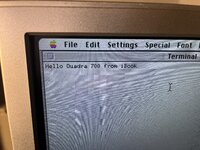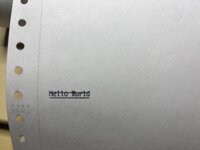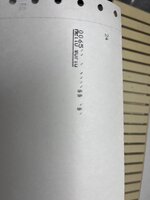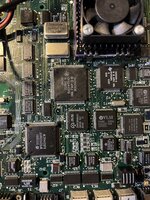I have some thoughts on this, that may be something or nothing.
The old mac serial ports are RS422, which is a four cable differential serial connection. However, there are three additional lines in apple's implementation, two for some kind of handshaking and clock sync, and one that is called a "General purpose input".
1) Simple terminal emulation will probably only use the four basic TxD± / RxD± lines using software flow control, so is unlikely to indicate any potential faults on the remaining three lines that the printers may or may not use.
2) It's not uncommon for differential signals to sort of kind of work if either side of the differential pair fails. For example, RxD LOW is 0V on both RxD- and RxD+, while RxD HIGH is (usually, for older equipment) 5V on RxD+ and -5V on RxD-, resulting in a differential voltage of 10V seen by the line receiver. If for example the RxD- line driver fails during RxD HIGH, you will have some floating voltage around 0V on that line, but RxD+ will still be dutifully pumping out its 5V, which results in some low-but-non-zero differential voltage that may or may not trigger the RxD line receiver.
I would lean towards 1) as being likely, RxD and TxD are working, but the printers use hardware flow control to increase communication bandwidth, and one or both of those lines is not working properly resulting in incomplete and corrupted instructions being received by the printer. Of course this is speculation, but it seems likely to me.
Do any serial port sniffer applications exist for classic mac os?





